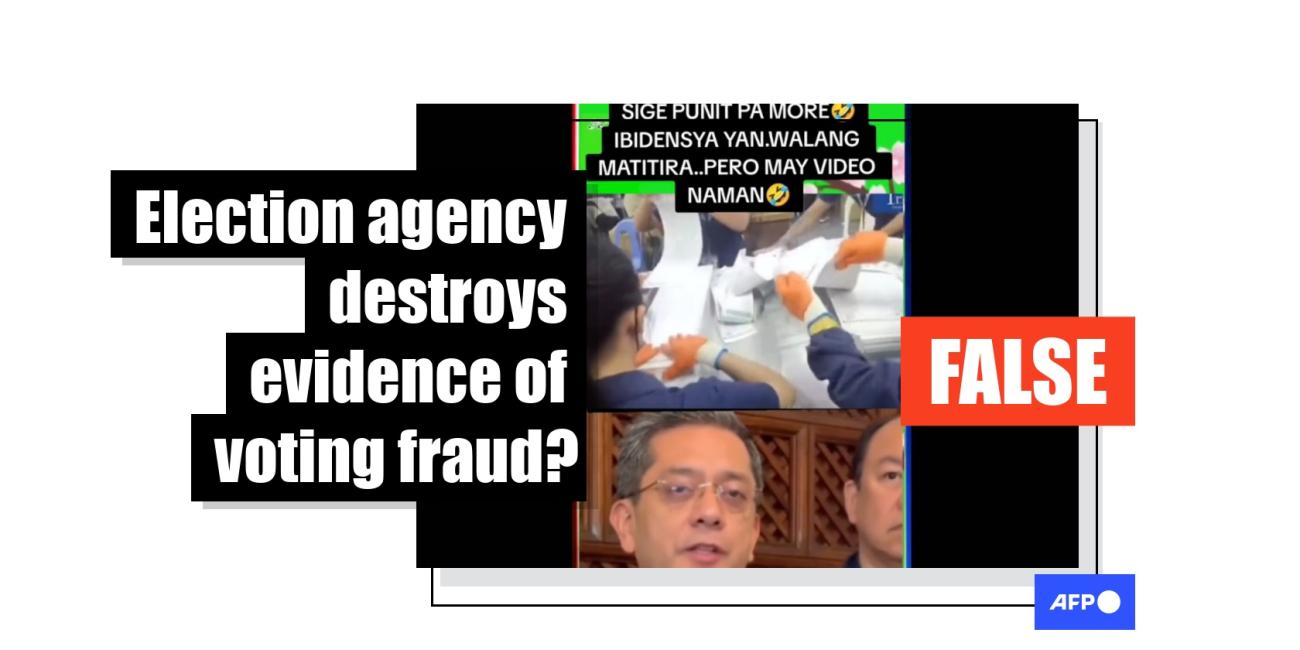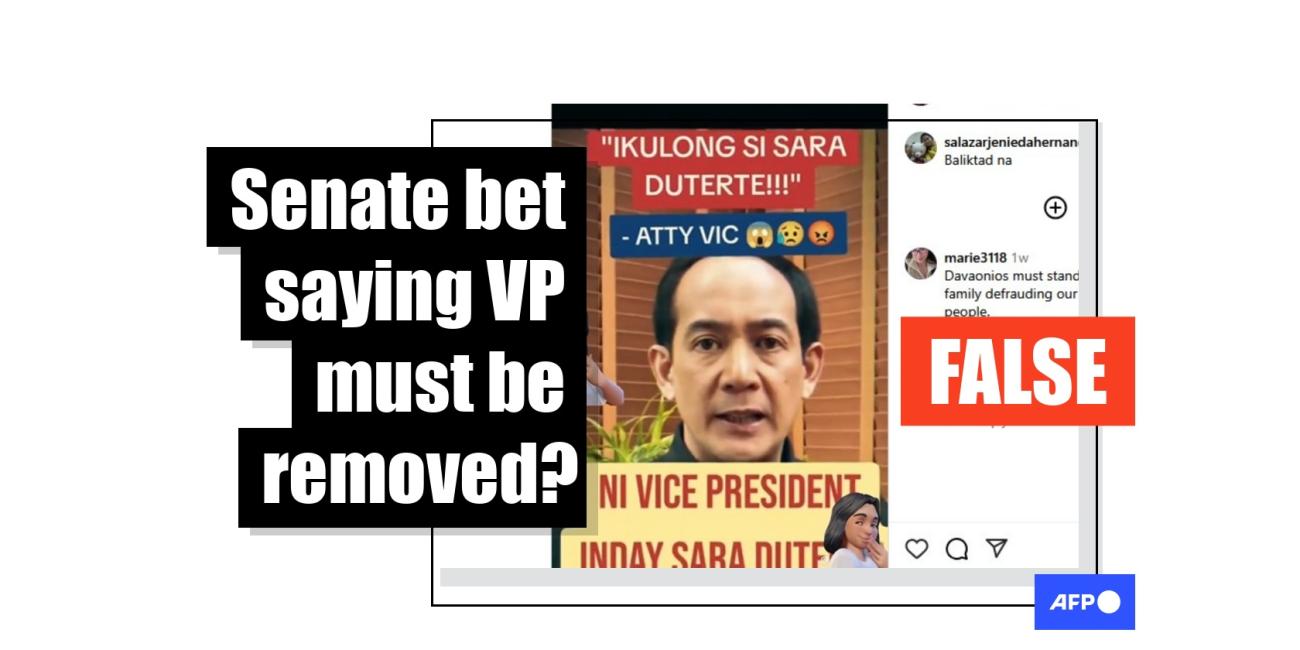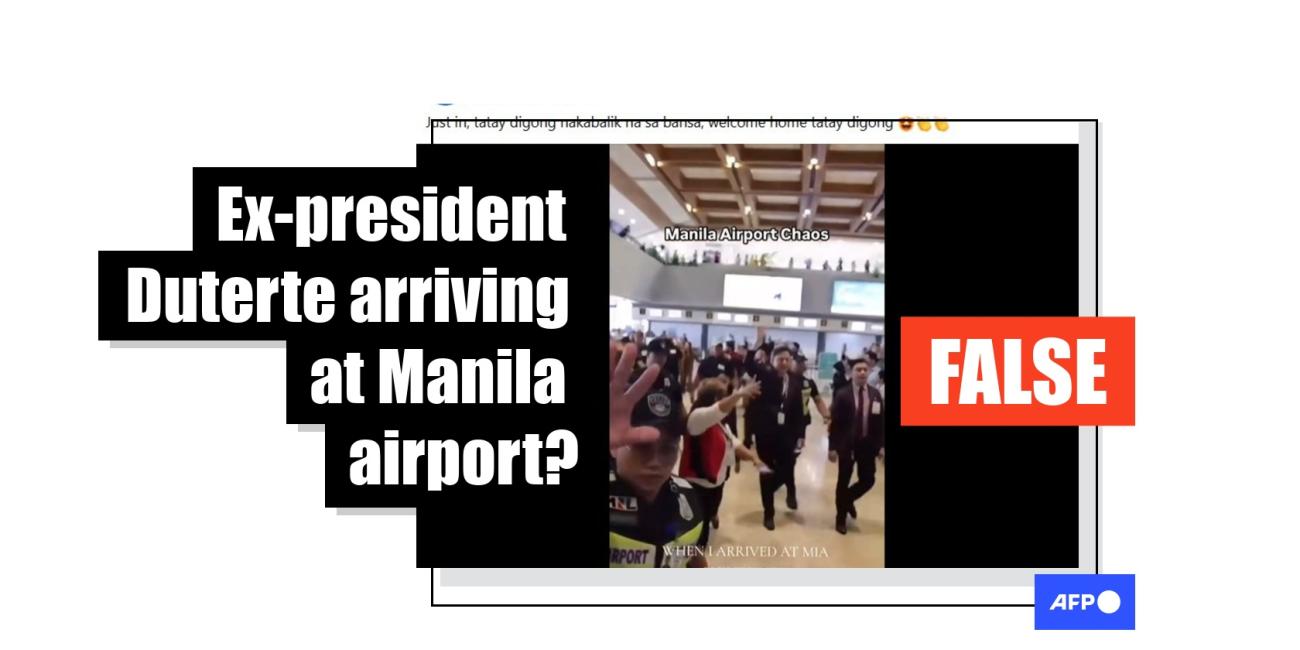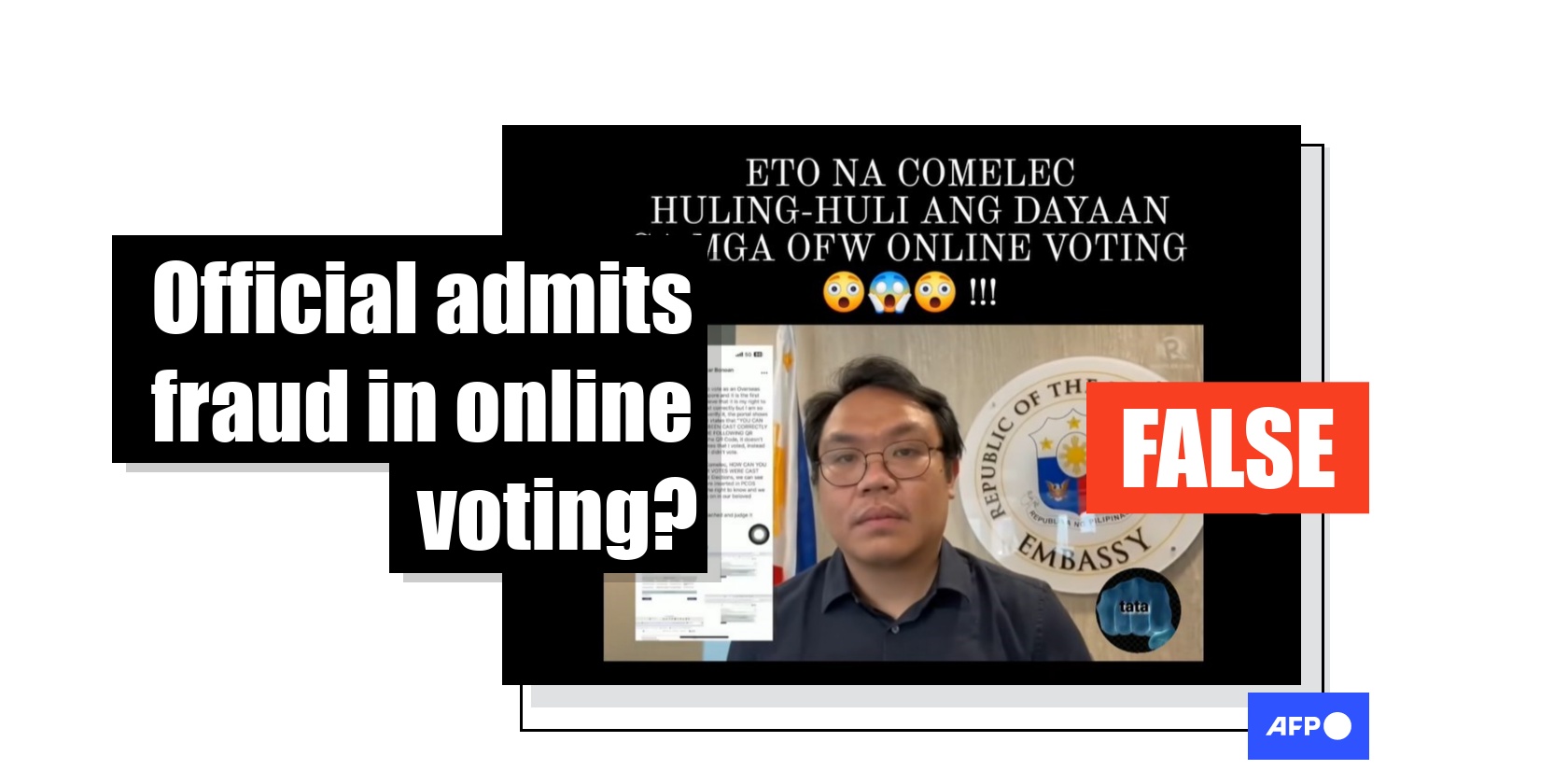
Clipped video fuels Philippine poll rigging claims
- Published on April 21, 2025 at 10:42
- 2 min read
- By Jan Cuyco, AFP Philippines
"Here it is. Comelec is exposed for fraud during OFWs' online voting," reads the Tagalog-language caption of a Facebook reel with more than one million views, using the acronym for overseas Filipino workers.
The clip, posted April 14, 2025, shows an interview with Comelec director for overseas voting Ian Geonanga, where he was asked about claims from some voters that their cast ballots included the names of candidates they had not selected.
Geonanga is depicted responding: "It's part of the process. It's designed like that."

On April 13, Comelec introduced the country's first online voting system as it kicked off the month-long voting period for overseas Filipinos for the May mid-term polls (archived link).
It defended the system after confusion arose online over a code on the ballot that contained the full list of candidates, which led to doubts whether voters' choice was correctly recorded (archived link).
Similar posts on Facebook and YouTube reshared the claim, but the video had been edited to omit the context of Geonanga's remarks.
A reverse image search of the video's keyframes led to his interview with Philippine news outlet Rappler published on April 16 (archived link).
"Comelec clarifies ballot code after voting online," the YouTube video's title reads.
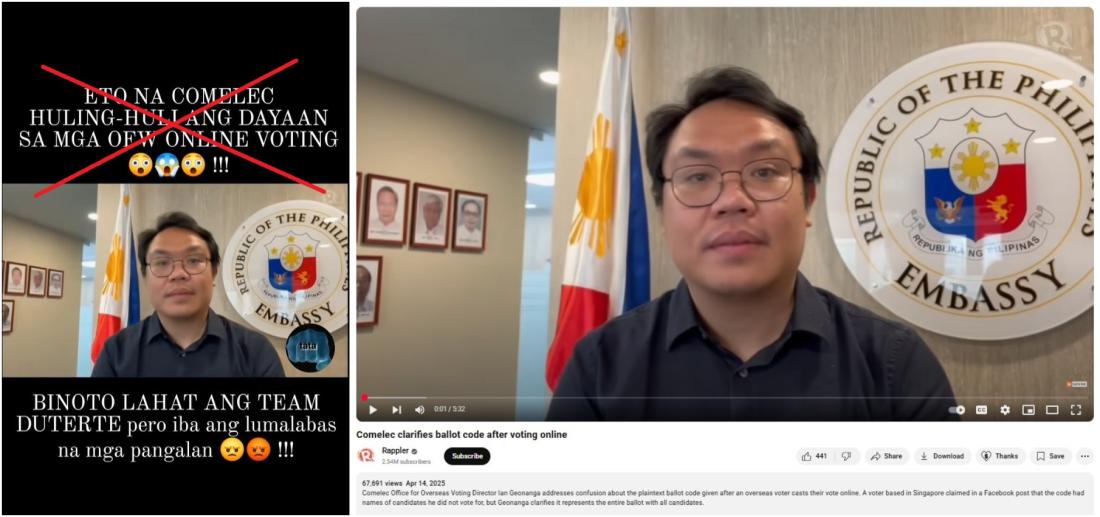
The full interview is more than five minutes long, but the circulating clip only shows the first 18 seconds and excludes Geonanga's further remarks.
"It's the plaintext version of the ballot itself. If they scroll from start to finish, they will see all the list of candidates that are in the ballot itself," he says at the 44-second mark.
"They will not really see which candidate they voted for because it is encrypted. It is designed like that."
In a Facebook post on April 15, Comelec also rebuffed the edited clip (archived link).
"There is no truth to the malicious Facebook video that was deliberately cut to remove the context of the statement," the agency's Tagalog-language statement reads.
The full version of the interview shows the agency's clarification on the issue, it added.
AFP has also fact-checked other election-related misinformation ahead of the Philippine mid-term vote.
Copyright © AFP 2017-2025. Any commercial use of this content requires a subscription. Click here to find out more.
Is there content that you would like AFP to fact-check? Get in touch.
Contact us
